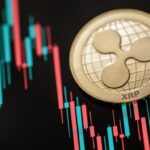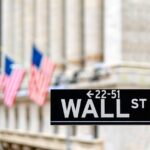Earlier in 2024, one prominent – and frequently controversial – Wall Street expert warned of the ‘most predictable forthcoming inflation crisis’ looming on the horizon.
By the midpoint of the year, it appears that inflation is not the only upcoming crisis that is easy to forecast, given the sheer number of recessionary indicators that have been flashing in recent months.
The most recent to join their ranks is the so-called Buffett indicator, a tool that compares the total market capitalization of all publicly-traded companies in a country to the national gross domestic product (GDP). In a nutshell, it is used to estimate how over or undervalued stocks are in general.
It became known as the Buffett indicator after the famous investor pointed toward it as one of the best methods of gauging ‘where valuations stand at any given moment’ in a 2001 interview.
What makes the readings worrying is that there has been a trend over the decades of the indicator surging in the lead-up to nearly every recession the U.S. has experienced – big or small.
While the valuation-to-GDP ratio is not yet at record highs – it stood at approximately 217% in 2020 – it is, at 197%, well above the levels seen right before the Dot-com bubble burst and right before the Great Recession started in 2007.
Is a stock market crash imminent?
Though the Buffett indicator is not a guaranteed harbinger of a crash, the reading should nonetheless give pause to investors as it is well above the ratio range generally considered to reflect an accurately-priced stock market – a ratio up to 100%.
On the other hand, the comparison between the total market cap of public companies and the GDP is far from the only metric hinting at the existence of a bubble.
In February, the increased concentration of gains – a concentration of gains that now has the ten biggest firms account for 77% of the SPX – has been identified as one of the concerning parallels between 2024 and 1929.
Finally, there have been numerous prominent analysts and experts – including some known to have accurately predicted the previous crises – that have stated that the technology sector has become a major bubble. Still, there is some disagreement about whether the bubble will burst and many still believe the boom is not unsustainable.








